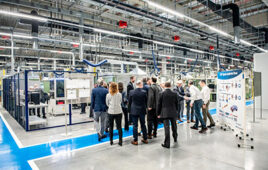Photovoltaic devices will have reached grid parity when they can produce electricity at the same cost or less than that of coal and gas-fired plants, and some researchers seek the rewards of success with as much fervor as the gold-rush miners of ’49.

The photoelectric effect, which is the principle of operation of modern solar cells was discovered decades ago, and until recently, had been used mostly for sensors and instruments. However, in the quest to discover alternative means to supplant natural fuel sources for producing electricity, the photoelectric effect emerged as a reasonable candidate and spawned an industry called photovoltaics, commonly called PV. This technology is the cornerstone for building solar cells, modules, and arrays, which are capable of producing kilowatts to megawatts of electricity.
The biggest limitation of solar devices is low conversion efficiency, which some experts claim range from only 8% to 19.9%. The second hurdle to overcome is the cost per watt of these devices; the goal is $2.00/W, although some assert that even $1.00/W is possible. When that happens, grid parity will have been reached. But don’t hold your breath; it could take a while longer because solar-cell processing costs remain high, the technology is still relatively complex, and no significant “quantum” breakthroughs are predicted today.
Silicon, silicon; everywhere silicon
Despite its high cost and complexity, two major factors drive solar cell research: the fact that silicon, the element of solar cells is the second most abundant element on earth-cheap, and the sun delivers more photons in one hour than the earth can use in one year-free. So, what could be better than cheap and free?
Photovoltaic cells come in two varieties: amorphous, and crystalline. Although the amorphous type is less expensive than the crystal, it has lower conversion efficiency, which means that amorphous arrays must cover more physical area than crystal arrays to produce the same amount of power. However, for now, solar arrays are appearing in some clever and creative places that do not get in our way or detract from the landscape, compared to the thick, black, toxic smoke of unbridled coal furnaces, and what some call “the foreboding appearance of windmills.” Read what Adept Technology has to report in the following article about automation, a solution that promises to solve one major problem -the high cost of manufacturing PV devices. With automated manufacturing, what can we expect in the near future regarding the extent to which solar power will light our future?
Filed Under: Green engineering • renewable energy • sustainability, Energy management + harvesting





Tell Us What You Think!